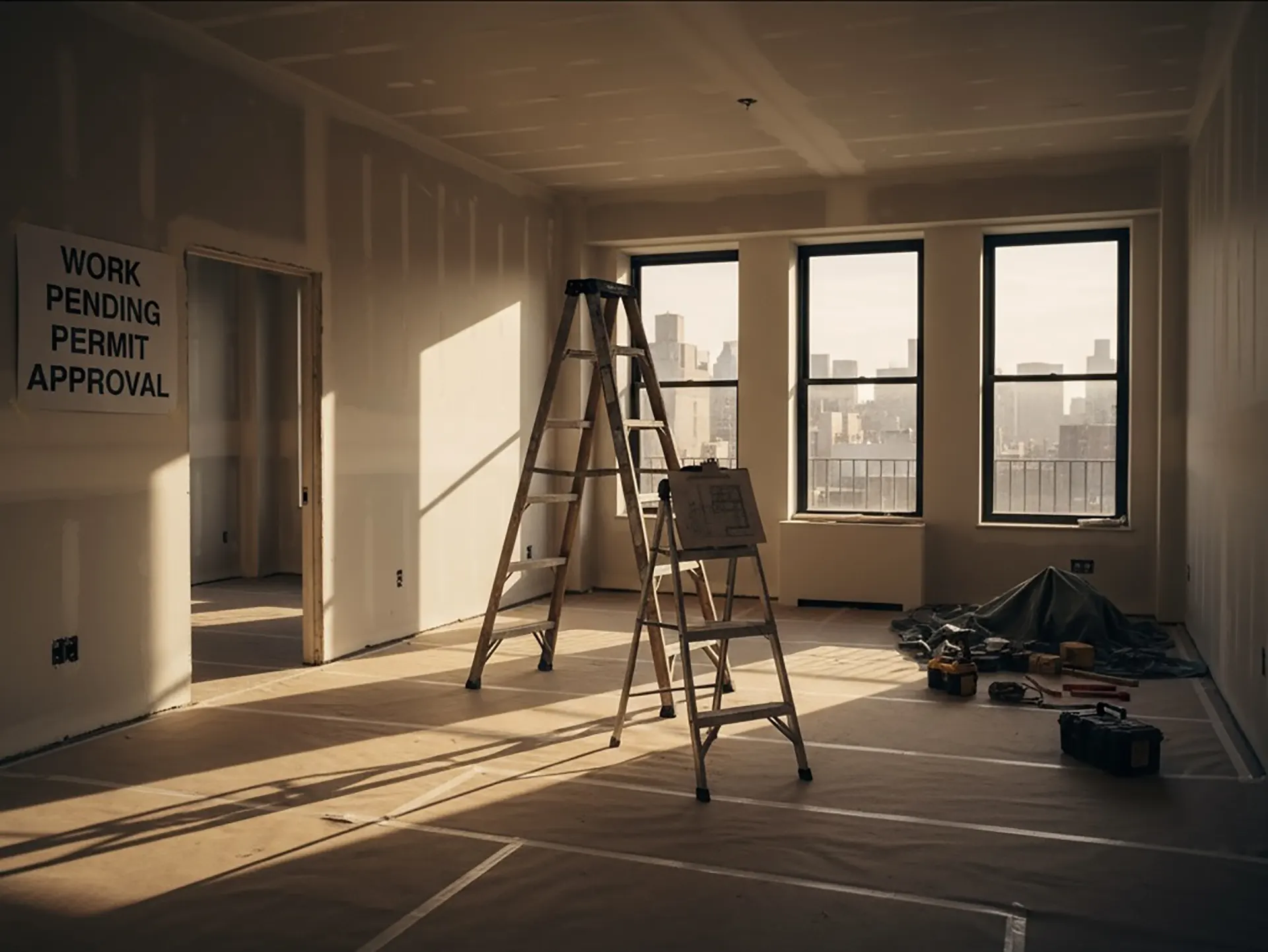Permits, Plans, and Patience
Undertaking a Renovation in New York City: Navigating DOB Rules Like a Pro
Undertaking a renovation in New York City Department of Buildings (DOB) territory is like navigating a maze whose walls shift as you go. For enthusiasts excited about ripping out walls, opening windows, or even installing custom cabinetry, the reality is: you’ll spend nearly as much time in preconstruction as in demo. And for urban projects—especially in tight-regulation markets like Manhattan—this can’t be ignored. But with the right preparation, your path to a beautifully finished space can be smoother than you think. Here’s how.
1. Know the terrain: what really requires a permit
A critical early step is distinguishing between cosmetic work and regulated alterations. According to DOB guidance, most construction in NYC requires a permit, including filings by a Registered Architect (RA) or Professional Engineer (PE).
Yet many homeowners believe, “It’s just new flooring / cabinets / lighting—no permit needed.” That’s only partially true. According to a guide from Brick Underground:
“Generally speaking, a DOB permit isn’t required for ‘cosmetic’ or surface upgrades… installing new tiles or flooring, lighting and plumbing fixtures in the same location may not trigger a permit.”
Translation: If you’re changing layouts, moving plumbing, creating new openings, or altering structural or egress elements—you’re almost certainly filing.
And if your building is a co-op or condo, there’s another layer. As outlined in CooperatorNews, alteration agreements with the co-op board (and sometimes formal board approval) are standard.
Before you swing the hammer, your project may require:
- Building management / co-op board sign-off
- Licensed architect or engineer submitting drawings
- DOB filing and permit issuance
- Insurance and contractor licensing verified by building and DOB
Skipping any part risks work-stoppage, fines, or being forced to undo changes.

2. The filing process: step-by-step (and where time drags)
Here’s a typical sequence—each step a checkpoint where delay can creep in:
- Scope & drawings: Hire an architect/engineer, map the existing condition vs proposed changes, integrate code/zoning requirements.
- Pre-filing & board approval: Especially in co-ops/condos, you’ll submit to the board with your drawings, contractor info, schedule, dust plan, elevator use plan, etc.
- Filing with DOB: The RA/PE files via the DOB portal (e-filing system such as DOB NOW) with drawings, fees, responsible parties.
- Plan review / objections: DOB plan examiner reviews for code compliance, zoning, egress, structural safety. Objections may require resubmission and add weeks.
- Permit issuance: Once approved, permit is pulled; contractor may start work. Otherwise, no legal start.
- Inspections & final approval: Mid-work inspections, final sign-off — crucial for Letter of Completion or amended Certificate of Occupancy.
Where the time goes
Permit approval for significant projects in Manhattan can take 6–12 weeks or more. One kitchen-renovation guide cited:
“Permit Approval: 6 to 16 weeks for building approvals and permitting; Co-op/Condo Board Approval: Additional 2-6 weeks (if required).”
Delays often stem from: incomplete drawings, missing documentation (asbestos inspections, elevator use plans), building objections, or permit queue backlog.

3. Navigating board rules & building constraints
In Manhattan’s co-ops and luxury condos, your building’s rules can be as critical as city code. A board’s alteration agreement may impose working hours, delivery protocols, dust-barrier requirements, insurance and indemnification conditions. Without compliance, they may withhold building support or halt your job.
Further, even if DOB allows a change (e.g., expanding a kitchen footprint), the board may not. One guide observed:
“Some work that is legally allowed by the DOB … may not be approved by the building’s co-op board.”
Bottom line: ensure both city and building approvals are aligned before you commit to schedule or materials.
4. Strategic tips to reduce friction
- Hire the right team early. Engaging an architect/engineer experienced with Manhattan permits prevents surprises.
- Use a permit expediter. For complex filings, an expediter knows DOB workflows and can expedite review.
- Create a full schedule with buffer. Expect paperwork phases; don’t schedule demolition until you have your permit.
- Document every submission. Keep copies of drawings, board approvals, insurance, contractor licenses—these are often required by DOB or building.
- Communicate with neighbors & management. Advance notice of timeline, elevator use, dust protection, etc. builds goodwill and smooths access.
- Plan for contingencies. Hidden conditions (asbestos, structural issues) often show up once walls are opened. Having contingency budget/time prevents derailment.
5. Why design-&-build helps in this environment
When you’re juggling city permitting and building board approvals and construction logistics, one of the biggest advantages is having one team manage the workflow. That’s where firms like Hoppler Design & Build shine. They combine design, engineering and construction into a single path—so drawings anticipate DOB code + board requirements, filings move promptly, and construction kickoff aligns smoothly.
The fluid hand-off from design to build means less delay, less risk of miscommunication, and a stronger alignment between ambition and execution.
Final Thoughts
Navigating NYC’s renovation bureaucracy is less glamorous than selecting marble slabs or lighting fixtures—but infinitely more vital. A permit in hand doesn’t just authorise work; it governs timelines, protects your investment and preserves your sanity. Managing board approvals and DOB filings requires patience—but also strategy.
If you plan your renovation not just for aesthetics, but for approval and execution, you’ll avoid the most common traps: delays, surprise costs, bureaucratic stoppages. And when your expert partner handles these backstage complexities, you’re free to focus on the design decisions that make your space extraordinary.
When you’re ready to move from concept to construction—and want a team that knows both the creative and regulatory terrain—Hoppler Design & Build stands ready to guide you.
Landmark Living: Renovating Historic Buildings in NYC’s Protected Districts
There’s a unique romance to living in a pre-war brownstone or a historic loft in one of New Yo
DIY or Hire a Pro? A Guide to Making Smart Renovation Decisions
The allure of DIY renovation projects is undeniable; there’s something deeply satisfying about
Cracking the NYC Permit Code: Your Step-by-Step Guide to DOB Approvals
Navigating New York City’s Department of Buildings feels like decoding an ancient language mix


